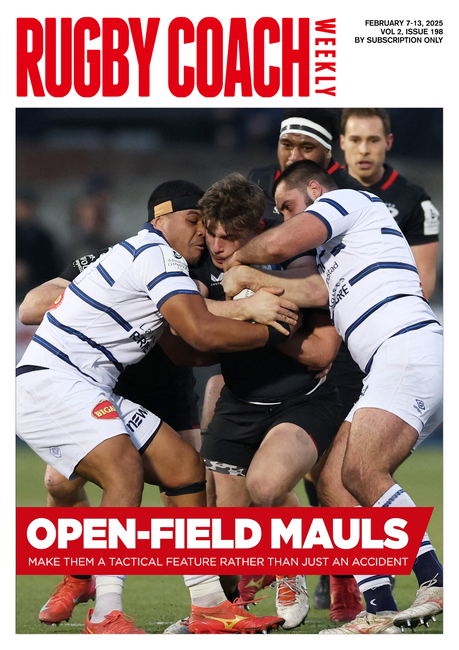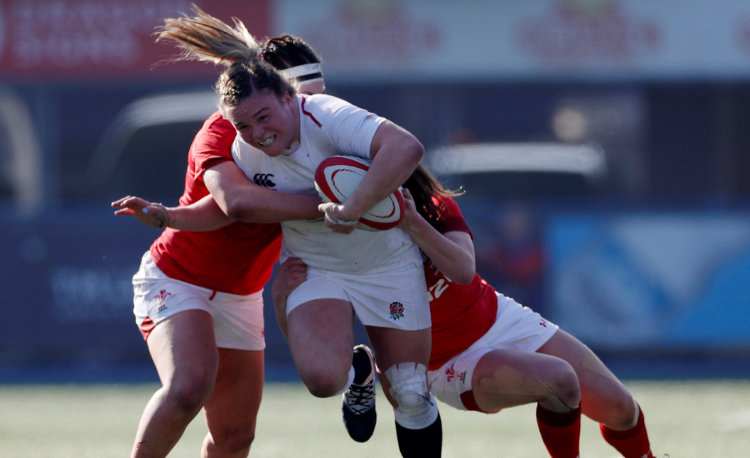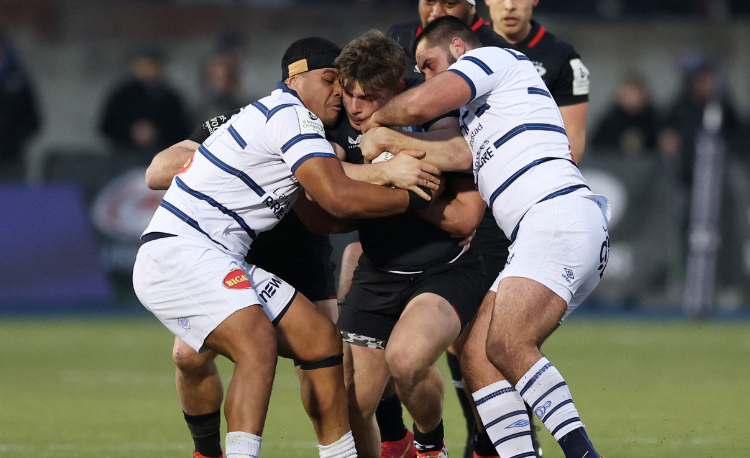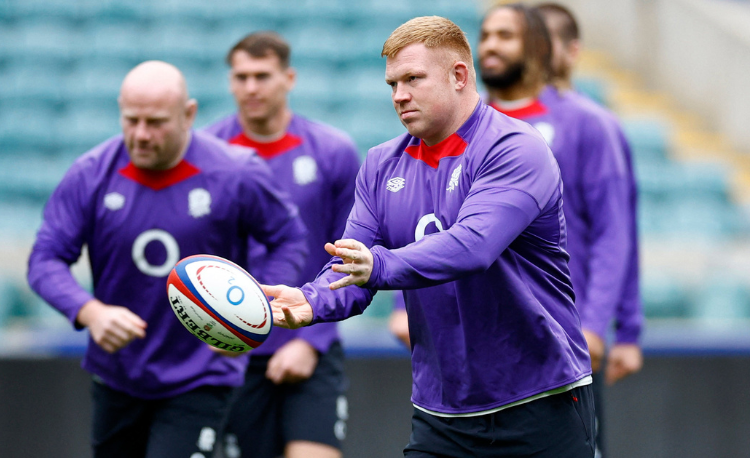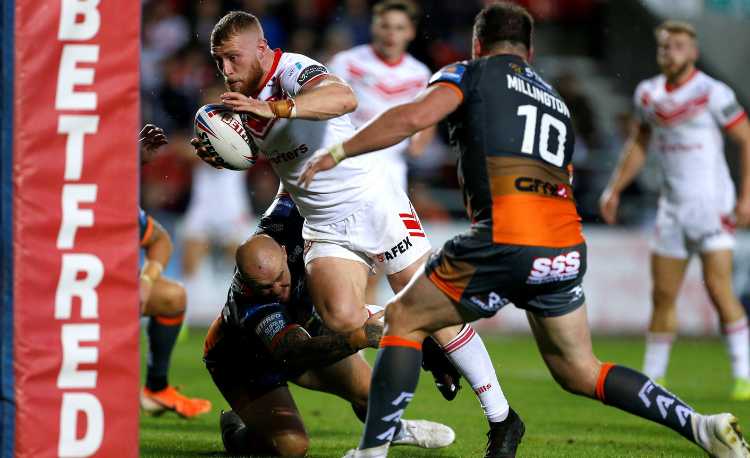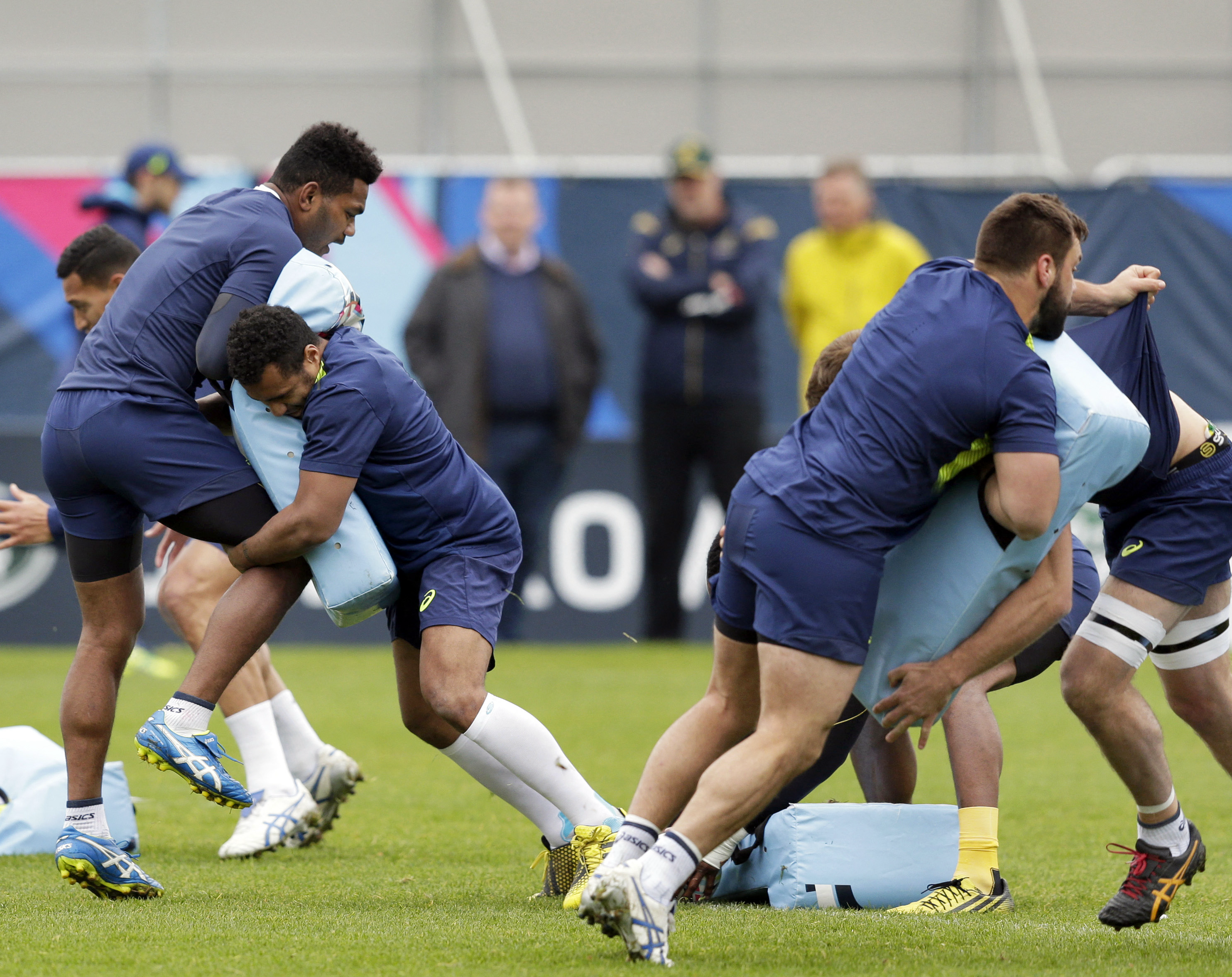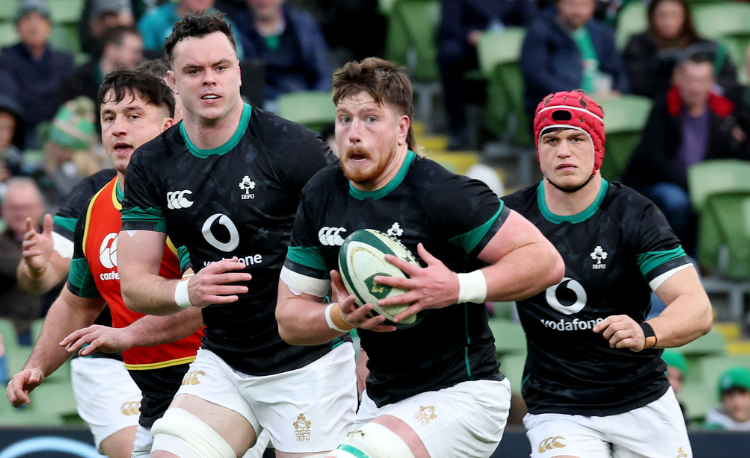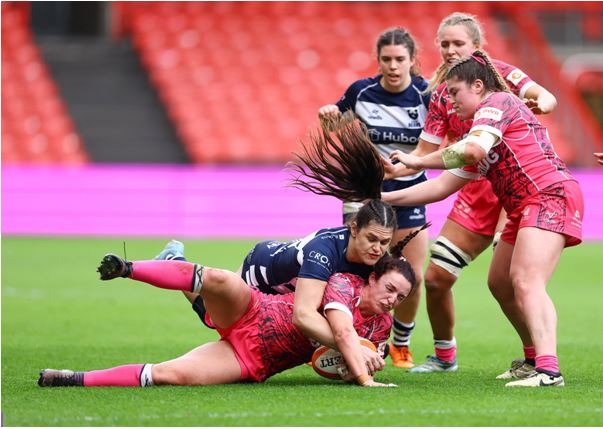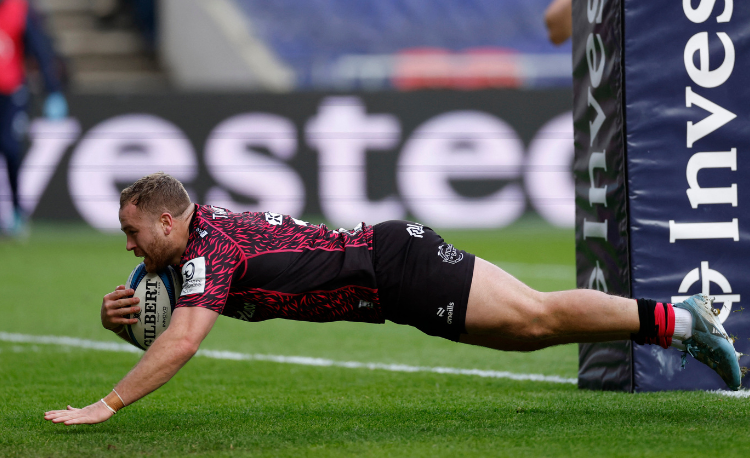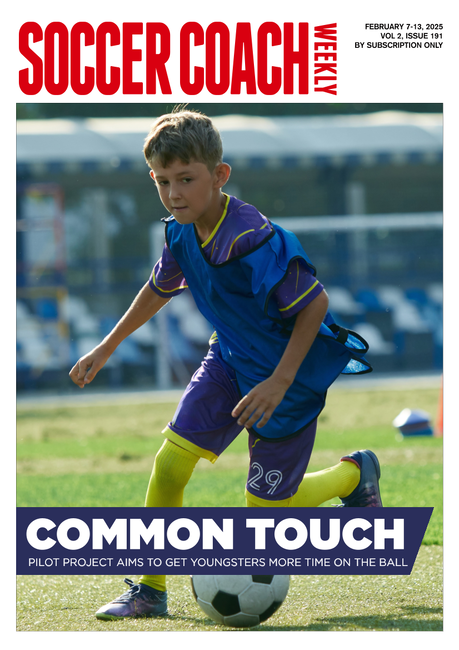Perfect performance – the processes that power the champion Chiefs
Every player at the Chiefs takes responsibility for improving his own skill-set so that as a team can play the own game at their own pace. Attention to detail, practice and constant feedback help develop these skills to the highest level.
The desire to improve the detail comes from constant communication between coach and player.
Key factors
1. LQB – lightning quick ball – comes from avoiding T-boning and excellent decision-making at the ruck.
2. Players take responsibility for improving their own detail – in planning and then in their own training.
3. Each core skill has a number of goals that lead to accurate execution.
4. It’s an all-year-round commitment to working on areas like 4 v 3s.
Key take aways
1. Landing on the ball after the tackle often means the ball carrier has won the contest.
2. Tacklers must keep their feet active and not “get paralysed” in the tackle.
3. Post-match reviews for players might include the replacement or back-up players.
4. The core-skill goals provide a reference point for a player’s training plan for the coming week.
We need to play with the pace that put teams under pressure.
Our processes are crucial and in particular we want to generate the essential LQB (lightning quick ball).
When we look at the processes, we needed to ensure the detail is correctly executed.

It all starts with the ball carrier beating the tackler, not running into him. In other words, not “T-boning”, which is driving into the middle of the defender.
If the ball carrier does get tackled and goes to ground, the best outcome is often that he lands on the ball. Once he does this, he places it back sharply to the oncoming support player. Landing on the ball tends to indicate that we’ve beaten the tackler and dominated the contact.
If we T-bone, we find that the ball carrier enters into a wrestling contest and gets held up. This slows down the ruck, allowing the opposition to get into a defensive position. With referees more attuned to calling a maul turnover now, this not only prevents quick release of our ball but might even lead to a loss of possession.
Our support play also needs constant revision and improved execution. There’s plenty of decision-making at the back of the ruck and we have to be accurate. The next arriving support has to make sure he’s either clearing out the threat or picking up the ball. He might pick up and go or pop to another player or even pop the ball up to the 9.
The clearing player has to stay on his feet. This is a process, not a decision. This player has to fight to stay up and active. We don’t bridge over the ball.
We have clear processes and these need to be constantly communicated and discussed with the players. In the week after the game, we meet with the players to talk to them about improving their technical, tactical and individual preparation aspects of the match-day performance.
We also discuss where we might improve our collective processes. Each player is expected to address these improvements and plan out his week to include work-on windows on these areas. If a player feels he’s working on improving, we find he normally is.
The players will organise how these windows of training work. They take place after the main sessions. It might be that they invite one of the coaches to be involved in this part of the session to help to look at the specific aspect identified. The session could be working with a unit or just another player in their position.
Work-ons are broken into two groups: individual- or system-based. For instance, the player might work on their tackle technique as an individual or on their role in the ruck defence.

For each core skill we have certain aspects that are fundamental if the skill is to be executed accurately.
For instance, in the tackle we want players to dominate and that happens if the following four factors are in place:
1 Alignment – the player must be aligned correctly to make the tackle otherwise he won’t be able to reach the next stage
2 Contact point – we want the shoulder to make a proper impact
3 Wrapping – the grip needs to be strong to keep the tackler connected to the ball carrier
4 Feet after the tackle – the player mustn’t be “paralysed” on his feet after he has made the tackle
When we’re reviewing each player’s performance, we can use these factors as a reference point for their goals for the coming week. When they’re working on them in the windows of training, one of the coaching staff can watch over them to check they’re carrying through the technique.
But crucially, we ask them to first decide how they’re going to practise it to improve and who’s going to watch them. That will mean which coach they want to be helping them out.
In the practice, we look at the detail. For example, the player might find he’s bending at the hips instead of the knees to get low enough to make the tackle. That tends to make his feet stop. As soon as his feet stop, he can find himself reaching for the ball carrier.
Also, we might look at his head position. Sometimes, players put their head down too early, which means they lose sight of the target. They need to keep their chin up.
Or they’ve identified that they’re failing to finish off the tackle because they’ve stopped working their feet. Even if they’re low in the tackle, they can still dictate where they end up by working their legs.
FINISHING THE JOB EARLY
An example of how much detail goes into our play comes from our handling work.
Against the Highlanders, we scored a try from a 4 v 3, with quick hands releasing centre Robbie Fruean, who finished off a 2 v 1 by putting winger Tim Nanai-Williams in at the corner.
We worked on this type of 4 v 3 for hour after hour ahead of the Super Rugby tournament, right through from November into in-season training. Initially, we started off pretty simply, establishing the technical aspects of the catch-and-pass. It’s about getting the feel right and building up the cognitive levels.

Then we created lots of scenarios to test the players, reducing the time and space available and where the defenders come from. In the case of the Nanai-Williams try, some defenders were directly in front, some came from a bit further back and then the full back came across late.
The pass back inside is another example of what seems natural when you see it in matches. We’re constantly practising with our players running inside the ball carrier, so the carrier always expects a player to be on his shoulder.
Of course the ball carrier doesn’t pass unless he hears a call from the inside runner to say he is there.
Against teams where the inside defenders tend to drift off the line after the ball has gone onto the next player in the chain, this is particularly effective. Because we’ve been working on this for so long, we can make this part of the plan for this week to challenge these types of defences.
A winger might have identified that his footwork was poor in the tackle area. For example, he might have struggled to mark his opposite number. So he might have another winger run at him from different angles to help improve his ability to get close to the ball carrier. It would start at a low intensity, to build up the neural pathways (the brain signals to the muscles). Then the practice would get faster. By the end, it would probably finish with a few live tackles to check he’s able to complete the tackle.

SUMMARY
The desire to improve the detail comes from constant communication between coach and player.
Key factors
1. LQB – lightning quick ball – comes from avoiding T-boning and excellent decision-making at the ruck.
2. Players take responsibility for improving their own detail – in planning and then in their own training.
3. Each core skill has a number of goals that lead to accurate execution.
4. It’s an all-year-round commitment to working on areas like 4 v 3s.
Key take aways
1. Landing on the ball after the tackle often means the ball carrier has won the contest.
2. Tacklers must keep their feet active and not “get paralysed” in the tackle.
3. Post-match reviews for players might include the replacement or back-up players.
4. The core-skill goals provide a reference point for a player’s training plan for the coming week.
We need to play with the pace that put teams under pressure.
Our processes are crucial and in particular we want to generate the essential LQB (lightning quick ball).
When we look at the processes, we needed to ensure the detail is correctly executed.

CONTACT ON OUR TERMS
It all starts with the ball carrier beating the tackler, not running into him. In other words, not “T-boning”, which is driving into the middle of the defender.
If the ball carrier does get tackled and goes to ground, the best outcome is often that he lands on the ball. Once he does this, he places it back sharply to the oncoming support player. Landing on the ball tends to indicate that we’ve beaten the tackler and dominated the contact.
If we T-bone, we find that the ball carrier enters into a wrestling contest and gets held up. This slows down the ruck, allowing the opposition to get into a defensive position. With referees more attuned to calling a maul turnover now, this not only prevents quick release of our ball but might even lead to a loss of possession.
Our support play also needs constant revision and improved execution. There’s plenty of decision-making at the back of the ruck and we have to be accurate. The next arriving support has to make sure he’s either clearing out the threat or picking up the ball. He might pick up and go or pop to another player or even pop the ball up to the 9.
The clearing player has to stay on his feet. This is a process, not a decision. This player has to fight to stay up and active. We don’t bridge over the ball.
GETTING INTO THE FLOW
We have clear processes and these need to be constantly communicated and discussed with the players. In the week after the game, we meet with the players to talk to them about improving their technical, tactical and individual preparation aspects of the match-day performance.
We also discuss where we might improve our collective processes. Each player is expected to address these improvements and plan out his week to include work-on windows on these areas. If a player feels he’s working on improving, we find he normally is.
The players will organise how these windows of training work. They take place after the main sessions. It might be that they invite one of the coaches to be involved in this part of the session to help to look at the specific aspect identified. The session could be working with a unit or just another player in their position.
Work-ons are broken into two groups: individual- or system-based. For instance, the player might work on their tackle technique as an individual or on their role in the ruck defence.
MEETING TACKLE GOALS

For each core skill we have certain aspects that are fundamental if the skill is to be executed accurately.
For instance, in the tackle we want players to dominate and that happens if the following four factors are in place:
1 Alignment – the player must be aligned correctly to make the tackle otherwise he won’t be able to reach the next stage
2 Contact point – we want the shoulder to make a proper impact
3 Wrapping – the grip needs to be strong to keep the tackler connected to the ball carrier
4 Feet after the tackle – the player mustn’t be “paralysed” on his feet after he has made the tackle
When we’re reviewing each player’s performance, we can use these factors as a reference point for their goals for the coming week. When they’re working on them in the windows of training, one of the coaching staff can watch over them to check they’re carrying through the technique.
But crucially, we ask them to first decide how they’re going to practise it to improve and who’s going to watch them. That will mean which coach they want to be helping them out.
In the practice, we look at the detail. For example, the player might find he’s bending at the hips instead of the knees to get low enough to make the tackle. That tends to make his feet stop. As soon as his feet stop, he can find himself reaching for the ball carrier.
Also, we might look at his head position. Sometimes, players put their head down too early, which means they lose sight of the target. They need to keep their chin up.
Or they’ve identified that they’re failing to finish off the tackle because they’ve stopped working their feet. Even if they’re low in the tackle, they can still dictate where they end up by working their legs.
FINISHING THE JOB EARLY
An example of how much detail goes into our play comes from our handling work.
Against the Highlanders, we scored a try from a 4 v 3, with quick hands releasing centre Robbie Fruean, who finished off a 2 v 1 by putting winger Tim Nanai-Williams in at the corner.
We worked on this type of 4 v 3 for hour after hour ahead of the Super Rugby tournament, right through from November into in-season training. Initially, we started off pretty simply, establishing the technical aspects of the catch-and-pass. It’s about getting the feel right and building up the cognitive levels.

Then we created lots of scenarios to test the players, reducing the time and space available and where the defenders come from. In the case of the Nanai-Williams try, some defenders were directly in front, some came from a bit further back and then the full back came across late.
The pass back inside is another example of what seems natural when you see it in matches. We’re constantly practising with our players running inside the ball carrier, so the carrier always expects a player to be on his shoulder.
Of course the ball carrier doesn’t pass unless he hears a call from the inside runner to say he is there.
Against teams where the inside defenders tend to drift off the line after the ball has gone onto the next player in the chain, this is particularly effective. Because we’ve been working on this for so long, we can make this part of the plan for this week to challenge these types of defences.
A WINGER'S PRACTICE
A winger might have identified that his footwork was poor in the tackle area. For example, he might have struggled to mark his opposite number. So he might have another winger run at him from different angles to help improve his ability to get close to the ball carrier. It would start at a low intensity, to build up the neural pathways (the brain signals to the muscles). Then the practice would get faster. By the end, it would probably finish with a few live tackles to check he’s able to complete the tackle.

Newsletter Sign Up
Coaches Testimonials

Gerald Kearney, Downtown Las Vegas Soccer Club

Paul Butler, Florida, USA

Rick Shields, Springboro, USA

Tony Green, Pierrefonds Titans, Quebec, Canada
Subscribe Today
Be a more effective, more successful rugby coach
In a recent survey 89% of subscribers said Rugby Coach Weekly makes them more confident, 91% said Rugby Coach Weekly makes them a more effective coach and 93% said Rugby Coach Weekly makes them more inspired.
Get Weekly Inspiration
All the latest techniques and approaches
Rugby Coach Weekly offers proven and easy to use rugby drills, coaching sessions, practice plans, small-sided games, warm-ups, training tips and advice.
We've been at the cutting edge of rugby coaching since we launched in 2005, creating resources for the grassroots youth coach, following best practice from around the world and insights from the professional game.

